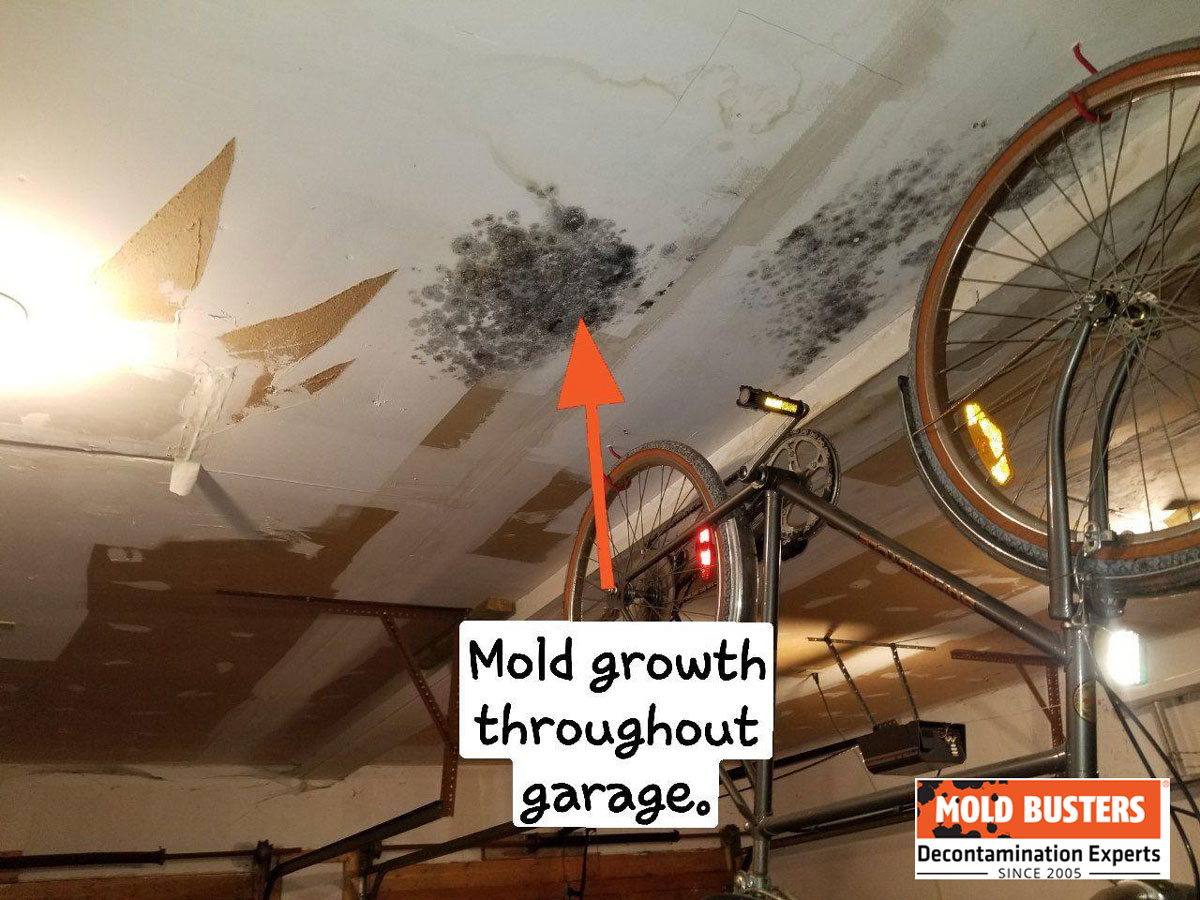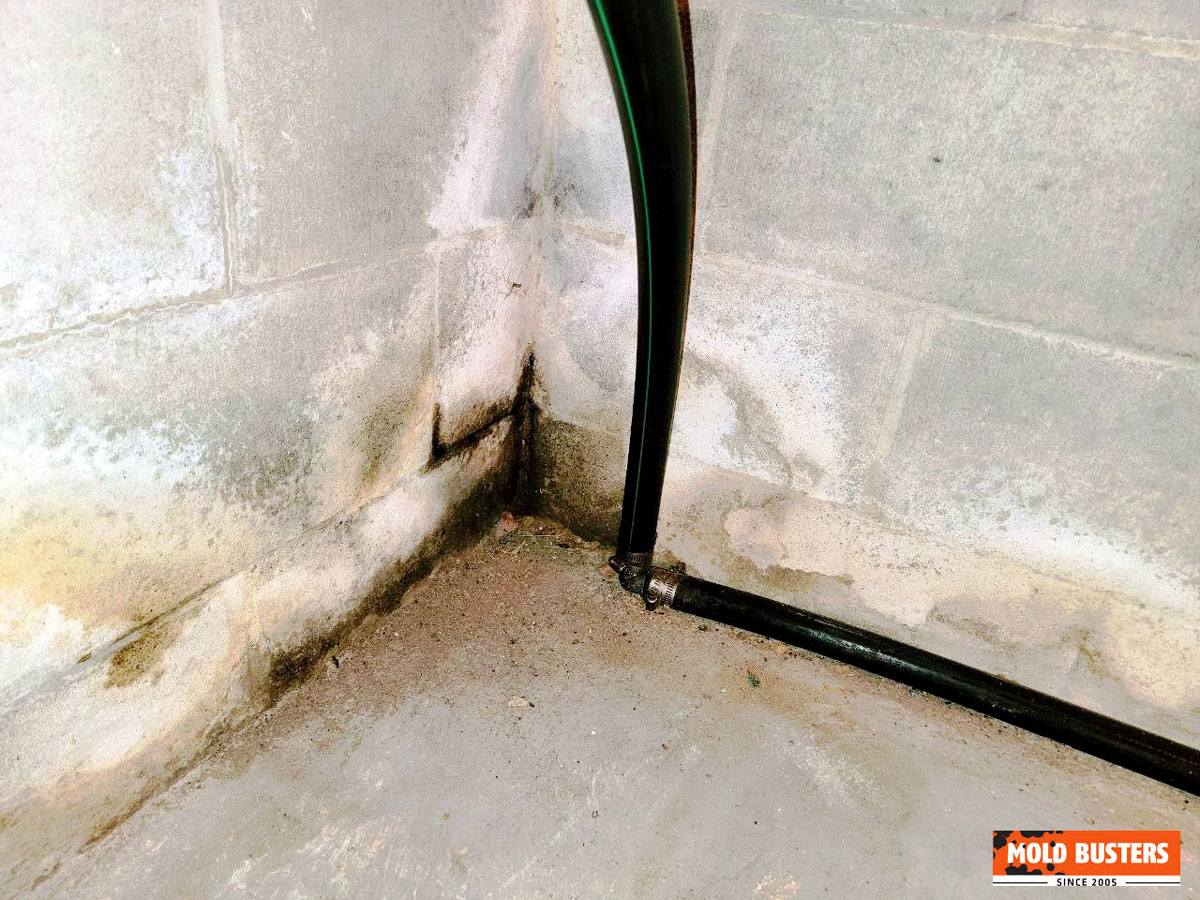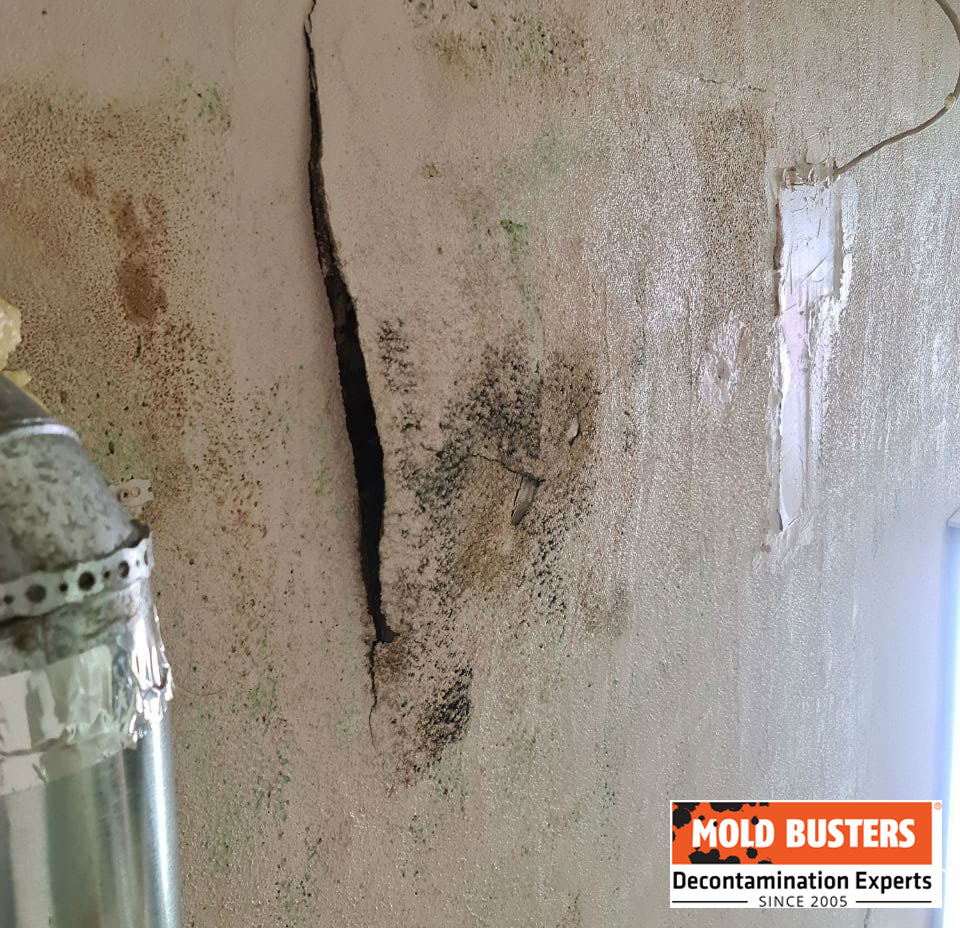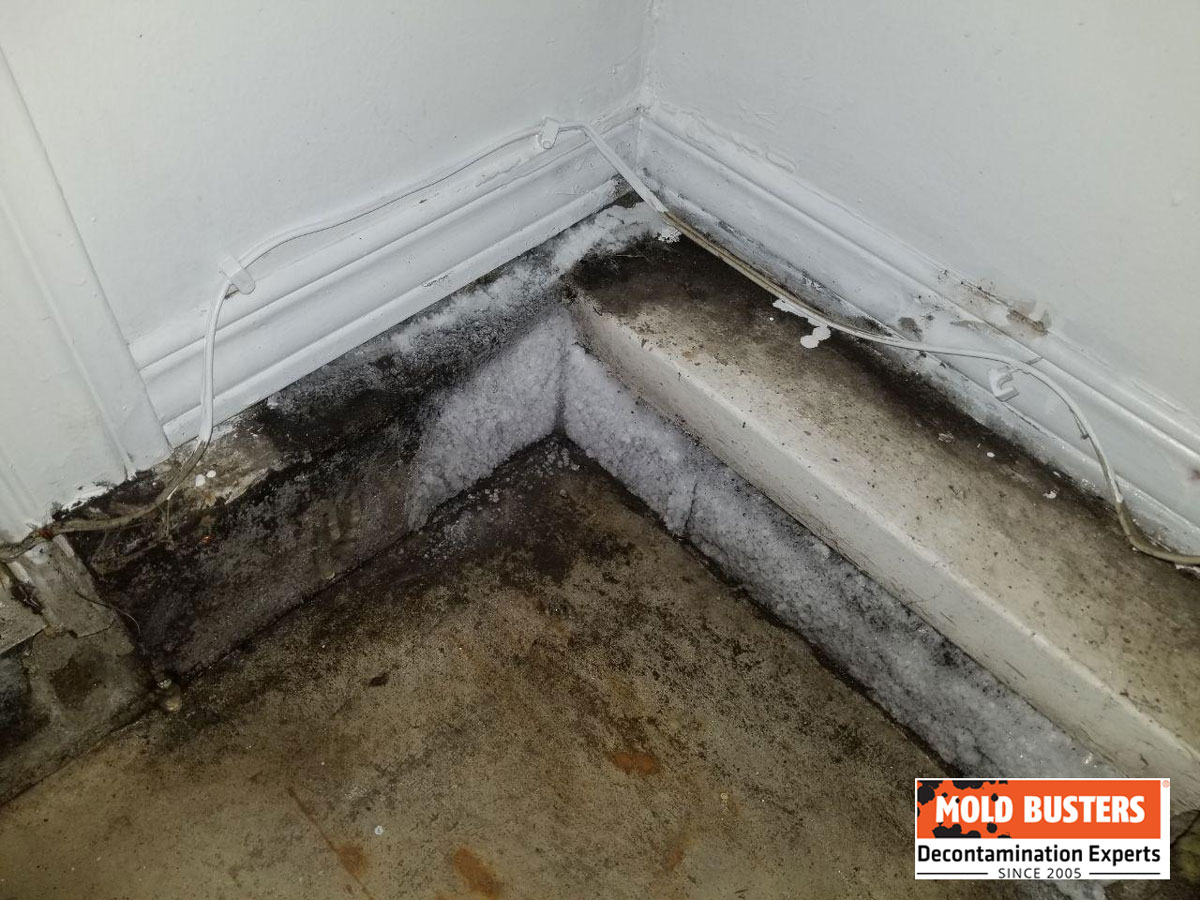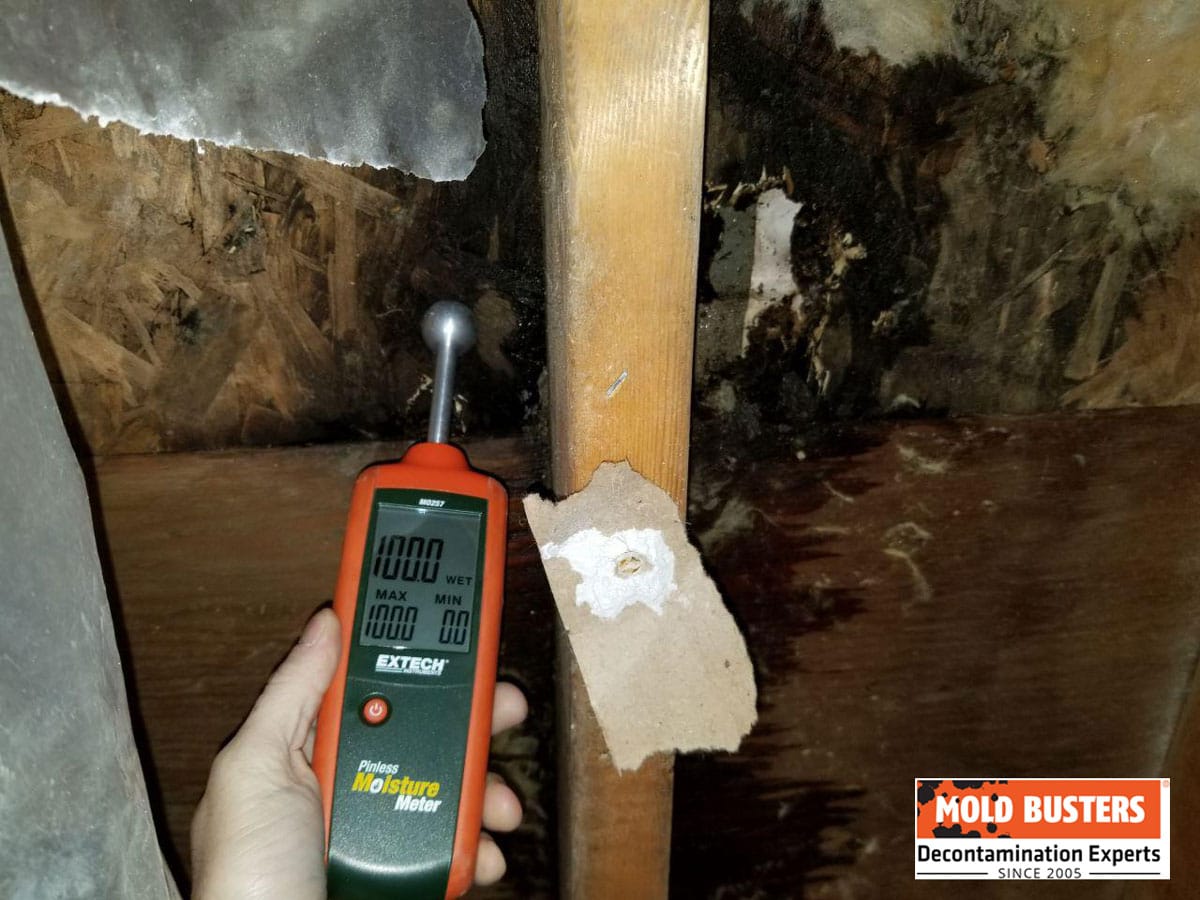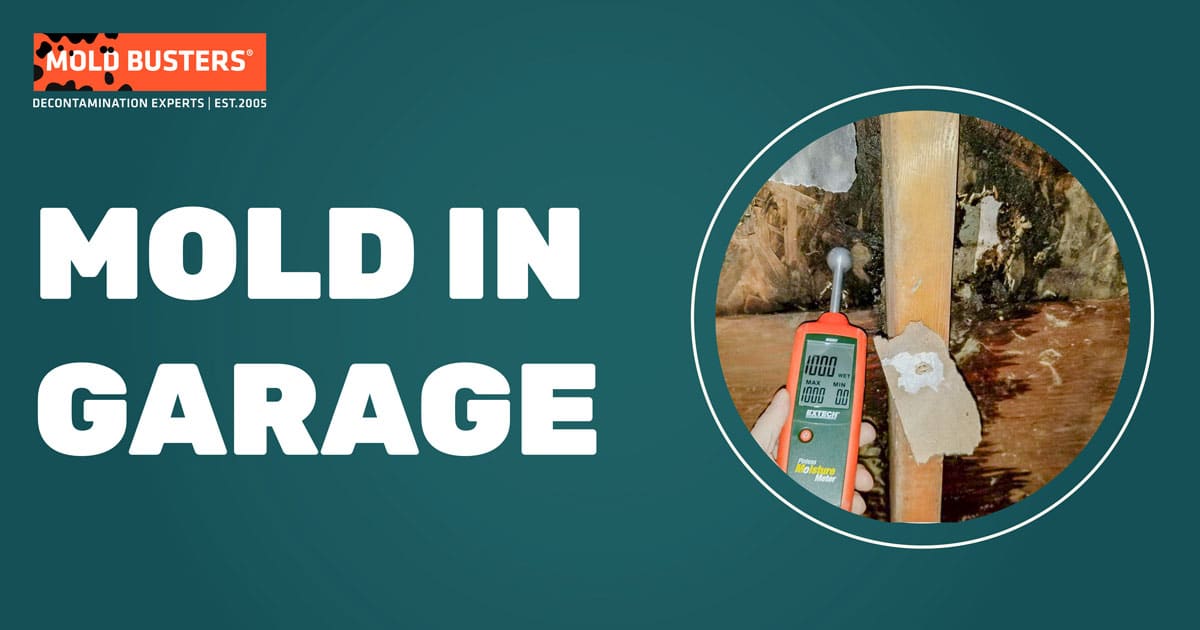Mold in Garage
Garages, both attached and detached, are usually overlooked when it comes to home maintenance. Homeowners and occupants start taking necessary steps only when their garages have already been flooded and menaced by mold. In a situation when mold is already there, there is little you can do besides calling professionals to help you deal with it.
Concerned About Mold in Your Garage? Get a Free Inspection!
Garages are often neglected spots where mold can thrive. Don’t let mold go unchecked! Contact Mold Busters for a free virtual mold inspection. Our experts will provide a thorough assessment and a plan to eliminate any mold issues, ensuring your garage is safe. Act now to protect your space!
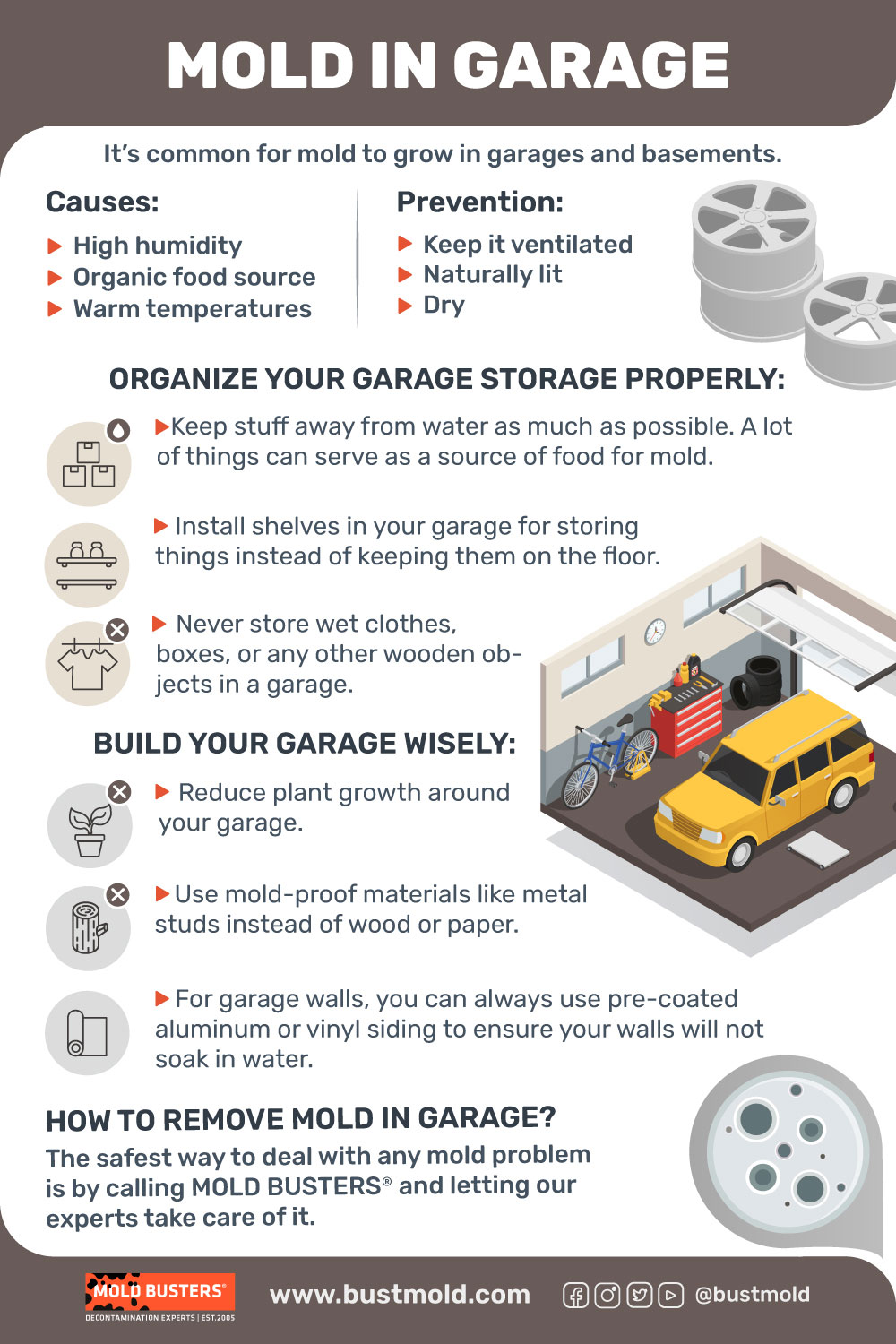
What causes mold in a garage?
Generally, garages have wide entrances that not only allow vehicles but also water to get through during heavy precipitation, such as rain or snow. For this reason, homeowners should pay special attention to properly sealing their garages and preventing mold growth.
If you have a snowblower or other wet items inside your garage, they can cause mold to grow from the excess moisture and humidity that will be released from the snow and water released by these items. Garbage is also a great catalyst for mold as well. The items inside the garbage bag are a great food source for mold and could spread to other areas of the garage (and home if the garage is attached to the house) if left for an extended period and then moved.
For a professional assessment, contact Mold Busters and they will have a trained inspector visit your home and provide you with recommendations to ensure your garage is functioning correctly and safely for you and your family.
Where does mold grow inside a garage?
Mold grows inside a garage in areas that are dark, moist, and humid. Mold spores can attach themselves to organic matter, so damp surfaces in a garage with food spills can be an ideal breeding ground for mold.
Mold on garage ceilings
Mold, especially black mold, thrives in dark environments where there’s excessive moisture. The garage ceiling is frequently exposed to such conditions, especially during damp weather or summer heat. When you park your car in the garage after a rainy day or snowfall, the moisture from the vehicle can rise, creating a perfect environment for mold to grow on the ceiling. It’s essential to ensure that your garage is properly ventilated to prevent such mold growth. If you notice black mold on your garage ceiling, it’s a sign of a serious mold problem that can lead to health problems, including respiratory disorders and asthma attacks.
Hiring professional mold removal company for garage ceiling mold
If you suspect the presence of black mold on your garage ceiling, it’s crucial to contact a professional mold removal company immediately. DIY solutions might not be effective against black mold, and it’s essential to ensure complete eradication to prevent serious health problems. A professional company will have the necessary tools and expertise to handle the mold problem efficiently.
Mold on garage concrete floors
Concrete floors and mold
Concrete floors, though seemingly impermeable, can absorb moisture, especially if there’s standing water or if they’re frequently exposed to wet conditions. This moisture can lead to mold growth, especially in dark environments like a garage. Mold loves such conditions and can quickly spread, causing damage to items stored on the floor, like cardboard boxes or paper items.
Garage floor mold removal
If you notice mold on your garage concrete floors, it’s essential to act quickly. Start by cleaning the affected area with distilled white Does Vinegar Kill Mold or a specialized mold removal product. However, for a more thorough cleaning and to ensure that the mold doesn’t return, consider hiring a garage mold removal service. They will not only address the current mold issue but will also provide guidance on using mold-resistant materials and mildew-resistant paint to prevent future growth.
Prevention
To prevent mold growth on concrete floors, ensure that your garage is properly ventilated. Avoid storing wet items directly on the floor and check for leaky plumbing or burst pipes that might contribute to moisture buildup. Consider using mold-resistant materials for any renovations and coat your concrete floors with mildew-resistant paint. Regularly check for signs of excessive moisture, such as mineral deposits or damp spots, and address them promptly.
Mold on garage walls/drywall
Installing drywall inside a garage has its share of issues when it comes to mold. If you install drywall and you do not prime and paint with high-quality paint, you run the risk of having excessive mold growth as unfinished drywall is a very porous substance. This creates a great moisture source for mold to form and start growing. Add in the moisture discussed previously and it’s an ideal environment. Painting the walls will slow down this growth but it will not prevent it completely. Keeping the moisture out of your garage is the best way to prevent mold from growing on walls. Also, keeping wet or damp items away from the wall will also slow the congregation of mold.
Mold on radon pipe inside the garage
Radon pipes are a great place for mold to grow as the pipe is pulling colder air from the ground into the garage where the warmer air is. Once these two temperature differentials meet, you get condensation forming on the exterior of the radon pipe. If there is sufficient dust or other particles on the exterior of the pipe, mold could start growing. To ensure this does not happen wipe down the radon pipe periodically with a cloth to keep it clean and it will prevent mold from growing on it.
Mold on garage doors
Garage doors are a great place for mold to grow. They have minimal insulation so in the cold winter months, condensation builds on the inside panels if your garage is heated. This causes a great moisture source for mold. Add in some dust or other food sources and the mold could congregate and grow on the garage door. Also, poor seals around the door can let water and snow inside the garage also causing moisture issues. Having a professional garage door installer come and adjust the door seals and door will keep this moisture from entering your garage.
Mold on items inside the garage
Let’s face it, your garage is where you place all the wet things and items you use outside. From wet boots to snow removal items, it all goes into the garage where it dries off. When drying, these items could start to grow mold on them if the temperatures and food sources are present. You can see mold growing on clothing and footwear regularly if left wet. Using a proper dryer for footwear to dry them quickly will prevent a lot of issues, as will keeping other items in your garage dry. For more information and an assessment of your garage, contact a Mold Busters professional and they can assess and inspect your garage and provide you with the proper information to keep your family safe while using your garage.
What are some types of molds that grow inside a garage?
Garages are sometimes great environments for mold to grow and colonize. Various types of molds can start growing quickly in a garage if the conditions are correct for them to congregate. Here are some of the more common types of molds you may find growing in your garage.
| Mold Type | Characteristics | Health Risks | Recommended Removal Method |
|---|---|---|---|
| Black Mold (Stachybotrys) | Dark black or greenish-black Slimy texture |
Respiratory disorders Asthma attacks Allergic reactions |
Professional mold removal Use of hydrogen peroxide or distilled white vinegar |
| Green Mold (Cladosporium) | Olive-green to brown or black Powdery or suede-like texture |
Skin rashes Sore throat Eye irritation |
Scrubbing with mold removal product Proper ventilation |
| White Mold | White and powdery Can grow on any organic material |
Allergic reactions Respiratory issues |
Scrubbing with mild detergent Ensure area is dry and free from moisture |
| Yellow Mold (Aspergillus) | Bright yellow or green Can appear in spots |
Lung infections Allergic reactions |
Professional mold removal Use of mold-resistant materials |
Black mold in garage
Black mold is a very common mold that grows in most places if the conditions are right. Its proper name is Stachybotrys Chartarum. It’s recognized by its color, but also by the way that it grows as it colonizes. It creates circular growth patterns and has a sticky quality to it. (Do not touch any type of mold growth without proper personal protective equipment (PPE).
Green mold in garage
Green mold is another common mold type that grows inside dwellings. Green mold has over one hundred different mold classifications that it could be. The most common molds that are green in color are Cladosporium, Aspergillus, and Penicillium. These molds have a greenish color to them when growing and may look like an algae growth.
White mold in garage
White mold is a third common type of mold that could grow inside your garage. This type of mold can take on the look and “texture” of efflorescence on concrete walls. It’s white in color and takes on a fluffy hair like appearance. It is generally less harmful than other types of molds but care still needs to be taken to remove it properly.
If you have any odd-looking growths inside your garage, contact a Mold Busters professional to visit and properly inspect your premises and test for mold. This will ensure your home is safe.
How to identify mold inside a garage?
If you suspect you have mold growing inside your garage but are unsure of what type it is, visit the resources pages on our website and educate yourself on mold and the various types of molds. The best thing in this situation however is to have a Mold Busters professional visit your home and do a thorough inspection and test to see if you have mold growing or not.
Is mold inside a garage dangerous?
Mold in any indoor environment can be dangerous to your health. Mold can cause many different health conditions, including headaches, nausea, respiratory issues and other side effects. Therefore, the best rule of thumb is that if there is any mold growing around the garage, contact Mold busters right away for the proper solutions to ensure your home and family are safe and healthy.
How to prevent mold in garage?
In order to prevent water from getting in your garage and creating haven-like conditions for mold to settle in, it’s important to seal garage doors well. Very rarely does garage door weather-stripping rest tightly against the garage frame, allowing water to seep inside the garage from outside, particularly in unfriendly weather conditions. Once water is in, you have limited time to prevent problems you may experience from wet things (if you are using your garage as a storage) turning into mold habitats.
Water intrusion and mold growth not only damage the structure of the garage and home in general, but they also negatively affect the vehicles parked inside. The best thing you can do to protect yourself from these negative effects is to take preventive measures against water intrusion to prevent mold growth and any further damage. Mold prevention is better than remediation.
In this article you can read 7 tips to help you deal with water in order to prevent mold growth inside your garage:
1. Inspect your garage
Pay attention to your garage’s overall situation. For example, roof cracks can be a cause of small puddles in your garage which, if not properly dried out, can become one of the mold causes.
With that being said, check the garage roof, gutters, pipes, etc. frequently to ensure that they are in good condition (i.e. that nothing is leaking). If there are leaks, fix them immediately.
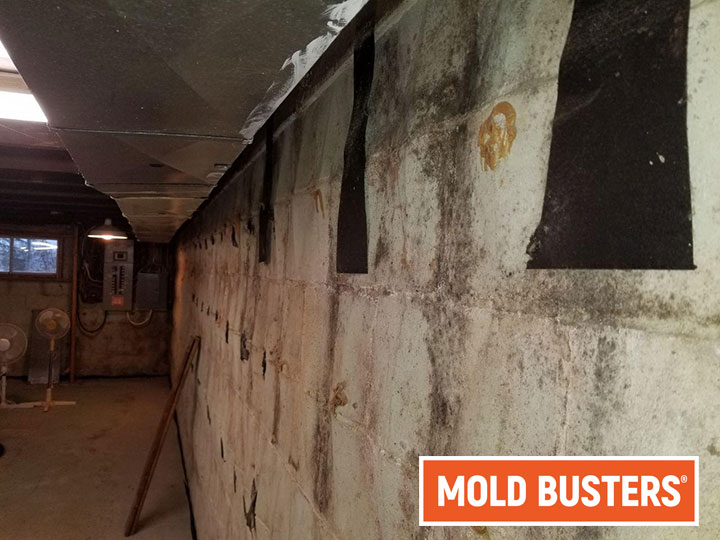
2. Good drainage system can save you a lot of problems
There are several ways water can get in your garage – it can be due to heavy rains, snow, and flooding, for example, or you can bring the moisture in with your car. This accelerates mold growth inside the garage along with structural damages to the building as a whole.
Once water is in your garage, you have to make sure it will go out as quickly as possible. To achieve that, you will need a good drainage system as well as a proper floor slope.
3. Organize your garage storage properly
If you are using your garage as storage, your goal is to keep stuff away from water as much as possible as a lot of things can serve as a source of food for mold.
Install shelves in your garage for storing things instead of keeping them on the floor. Sometimes garage flooding during heavy rainfall becomes unavoidable. In such cases, you will avoid moldy problems with your belongings only if they stay dry.
4. Keep humidity under control
Moist, dark, confined and stuffy environments are perfect conditions for mold to develop, thus making garages perfect for mold to grow. Therefore, to prevent mold growth in a garage, it is essential to keep it well ventilated, naturally lit, and dry.
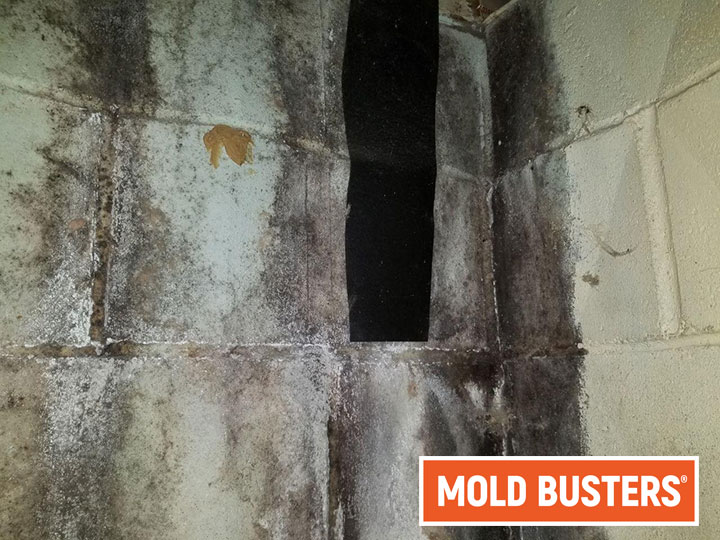
One of the common causes of mold (inside the garage, too) is high humidity which is often a problem due to lack of windows, air vents or any type of air ventilation. To reduce humidity inside your garage, install dehumidifiers and keep the humidity level between 30% and 50%.
Opening the garage door or window for a couple of hours each day will help increase air circulation, especially during the summer months. Fresh air is very important for mold prevention.
5. Build your garage wisely
If you are getting a new garage installed, you have the opportunity to ensure your garage is mold-free from the very beginning. Use mold-proof materials like metal studs instead of wood or paper. It may cost a penny or two more at the beginning, but in the long run, it will definitely be worth it.
For garage walls, you can always use pre-coated aluminum or vinyl siding to ensure your walls will not soak in water, which, of course, would lead to mold growth.
6. Reduce plant growth around your garage
Cut down on shrubs or plants that have grown near your garage walls. They may look nice and green but often they can cause cracks in the walls or ceiling, which increases potential leaks and water intrusion into your garage. What’s more, plants and shrubs collect moisture that tends to accumulate near your garage walls.
Bonus tips to help you master mold prevention in the garage:
- Place a container of silica gel, activated alumina, anhydrous calcium sulfate, or molecular sieves in the garage to reduce moisture.
- Extend gutter downspouts at least six to ten feet away from the garage foundation to prevent the buildup of moisture around the base of the building.
- Never store wet clothes, jackets, shoes, wooden cases, boxes, or any other wooden objects in a garage. All of these materials could act as fuel for mold growth.
How to get rid of mold in garage?
These prevention tips are simple, cost-effective, and easy to follow by homeowners. However, if you want to embrace a more efficient way of preventing mold in your garage, it’s always better to schedule a professional mold inspection from a reliable company in your area.
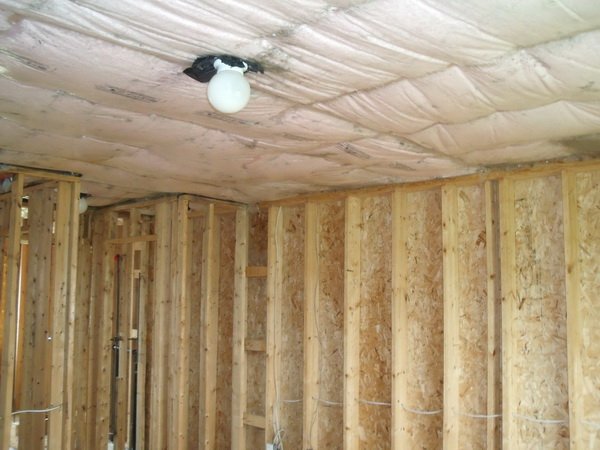
Contact Mold Busters, Ottawa’s leading environmental inspection and remediation company. We provide fast, effective, and affordable mold removal and flood restoration services for garages all over Ontario and Quebec. If you’re in the Montreal or Ottawa area and suspect mold growth in your garage, don’t hesitate to reach out to us.
Comparing DIY and professional mold removal methods
When faced with a mold problem in your garage, you might be contemplating whether to tackle the issue yourself or to call in the professionals. Both approaches have their merits and drawbacks. The following table provides a side-by-side comparison of DIY versus professional mold removal methods, helping you make an informed decision based on factors like cost, effectiveness, safety, and more.
| Criteria | DIY Mold Removal | Professional Mold Removal |
|---|---|---|
| Tools & Materials | Distilled white vinegar Hydrogen peroxide Mild detergent Scrubbing brushes |
Specialized mold removal products Industrial-grade equipment Protective gear |
| Effectiveness | Effective for small mold patches Might not eliminate mold spores completely |
Comprehensive removal Ensures complete eradication of mold and spores |
| Cost | Generally cheaper Costs associated with buying cleaning products |
More expensive Includes labor and specialized product costs |
| Safety | Potential exposure to mold spores Risk of using harmful chemicals without proper protection |
Professionals use protective gear Safe removal without risk to homeowners |
| Time Consumption | Time-consuming, especially for larger areas Multiple treatments might be required |
Faster due to specialized equipment Usually requires one visit |
| Post-Removal Tips | DIY tips for preventing future mold growth Limited to general knowledge |
Expert advice on preventing mold recurrence Recommendations on mold-resistant materials and paints |
FAQ
How do you remove mold from a garage door?
Removing mold from any surface needs to be done correctly. If it is just a small amount, the homeowner can proceed very carefully to make sure that the mold does not spread to other areas of the garage or home. Make sure you are fully protected with a proper mask, gloves, and eye protection before starting. You can use white vinegar in a spray bottle. Gently spray the affected areas until the mold is well saturated. Mold needs moisture to survive and grow, but vinegar contains citric acid which kills mold spores in large concentrations. After letting the mold sit in the vinegar for an hour, you can carefully and slowly wipe the mold off the garage door and discard the cloths into a garbage bag and tie tightly. You then wipe down the door with warm water and again discard that cloth into another garbage bag and seal tightly. The vinegar smell will subside in a couple of hours. If there is a large amount of mold, contact a Mold Busters professional to properly inspect and remove the mold to keep your home and family safe. We also offer a virtual inspection service for those who prefer an online consultation.
How to get rid of the musty mold smell inside the garage?
To get rid of the typical mold smell inside your garage you first need to remove the source of the smell. If there is mold growing inside you need to have it professionally removed from the dwelling. A Mold Busters professional will ensure this is done completely. After that is done, proper temperature and dehumidification can remove the smell that is inside the garage.
Can mold from a garage spread to the house?
If the garage is attached to the home and there is mold growing inside the garage it can spread to other areas of the home by traveling on clothes, items brought into the home from the garage, and even on air currents as mold spores are extremely small and lightweight. They can travel far distances with just a person walking by and disrupting the air around the mold colony. If there is mold growing inside the garage the best thing to do is to have a Mold Busters professional visit and remediate the mold properly before it spreads into your home.
Do I need mold-resistant drywall inside my garage?
If you are constructing or remodeling a home or garage, using mold-resistant drywall in high moisture areas like garages or bathrooms is a great way to reduce the risk of mold growing inside the structure. This will cut down on the chance of mold growing on the walls and ceilings. Proper ventilation, temperature, and humidity control is the best way to ensure that mold does not grow inside the garage. Having some basic knowledge of mold and how it grows goes a long way to keeping your home and family healthy and safe.
How much is a professional mold removal inside a garage?
This question is hard to answer as every case study is different. It all depends on what type of garage, mold, and how much of it is there to remove. The best answer to this question is to contact your nearest Mold Busters professional and have a thorough inspection and estimate provided to you. This way you know what it will cost to repair the damages.

Get Special Gift: Industry-Standard Mold Removal Guidelines
Download the industry-standard guidelines that Mold Busters use in their own mold removal services, including news, tips and special offers:
Published: May 19, 2020 Updated: June 10, 2024

Written by:
Steven Adams
AMRT, WRT, ASD
Mold Busters
Fact checked by:
Michael Golubev
CEO
Mold Busters

